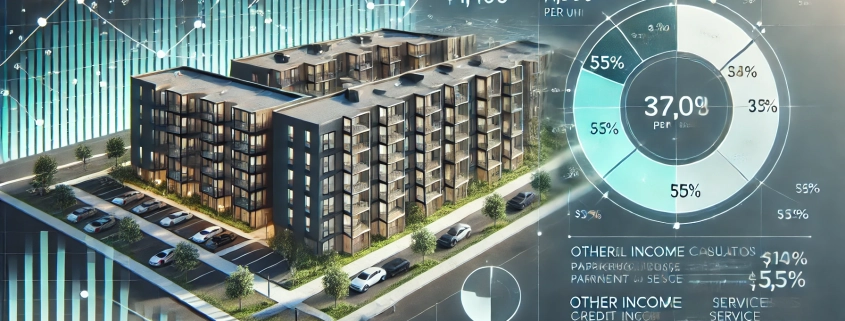Effective Gross Revenue
Also referred to as Effective Gross Income, EGR, or EGI. Effective Gross Revenue is the sum of total Rental Revenue and total Other Income, less any adjustment for general vacancy and credit loss.
Effective Gross Revenue = Total Rental Revenue + Total Other Income – General Vacancy & Credit Loss
Putting ‘Effective Gross Revenue’ in Context
Sunstate Capital recently acquired Crescent Oaks Apartments, a 150-unit, market-rate multifamily property located in a growing neighborhood in New Orleans, Louisiana. As part of evaluating the performance of this core-plus investment, Sunstate Capital’s asset management team is focused on calculating Effective Gross Revenue (EGR), which will provide a clearer picture of the property’s true income potential.
Property Details
- Total Rental Revenue: The monthly rent per unit at Crescent Oaks Apartments averages $1,400. With 150 units, the property generates:Total Rental Revenue = 150 units × $1,400 per unit × 12 months = $2,520,000 annually
- Other Income: In addition to rental income, the property generates income from parking fees, laundry services, and pet rent. These other income sources total $75,000 annually.
- General Vacancy & Credit Loss: Given the property’s core-plus nature, Crescent Oaks Apartments operates in a competitive submarket of New Orleans. Sunstate Capital projects a 5% vacancy and credit loss rate, accounting for units that may be vacant or rents that are uncollected due to tenant default. The combined vacancy and credit loss calculation is:General Vacancy & Credit Loss = 5% × ($2,520,000 + $75,000) = 0.05 × $2,595,000 = $129,750
Effective Gross Revenue Calculation
With these figures, Sunstate Capital calculates the Effective Gross Revenue (EGR) using the following formula:
Effective Gross Revenue (EGR) = Total Rental Revenue + Total Other Income – General Vacancy & Credit Loss
Plugging in the numbers:
EGR = $2,520,000 + $75,000 – $129,750 = $2,465,250
Thus, the Effective Gross Revenue for Crescent Oaks Apartments is $2,465,250 annually. This metric helps Sunstate Capital accurately gauge the income the property can expect to generate after adjusting for vacancies and credit losses. The EGR is a crucial component of the property’s overall financial analysis and is used as the foundation for calculating key metrics like Net Operating Income (NOI) and cash flow.
Frequently Asked Questions about Effective Gross Revenue (EGR)
What is Effective Gross Revenue (EGR)?
Effective Gross Revenue (also called Effective Gross Income or EGI) is the total of a property’s rental revenue and other income, minus general vacancy and credit loss.
How is EGR calculated?
EGR = Total Rental Revenue + Total Other Income – General Vacancy & Credit Loss.
What types of income are included in EGR?
EGR includes rental revenue and other income such as parking fees, laundry, pet rent, or any ancillary income streams tied to the property.
What is General Vacancy & Credit Loss?
It represents the expected loss in income due to vacant units or uncollected rent. It’s usually estimated as a percentage of total income.
What was the EGR at Crescent Oaks Apartments?
Sunstate Capital calculated EGR as $2,465,250 using the formula: $2,520,000 (rents) + $75,000 (other income) – $129,750 (5% vacancy/credit loss).
Why is EGR important for property analysis?
EGR offers a realistic view of expected income and is a foundational input for evaluating Net Operating Income (NOI), cash flow, and property valuation.
How does EGR differ from Gross Potential Rent?
Gross Potential Rent assumes full occupancy and no loss, while EGR adjusts for real-world factors like vacancy and tenant defaults, providing a truer income picture.
Click here to get this CRE Glossary in an eBook (PDF) format.

